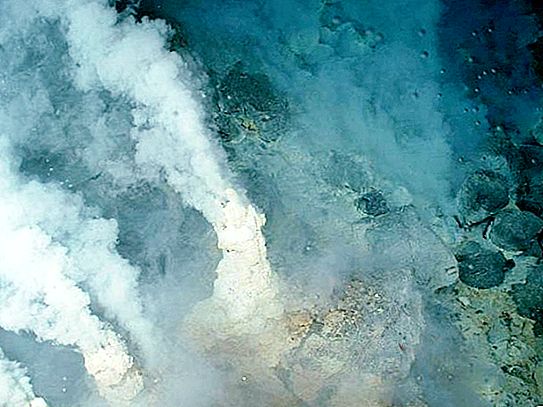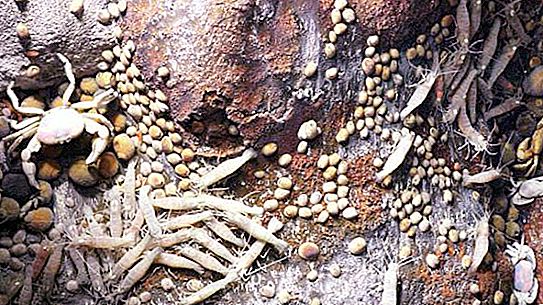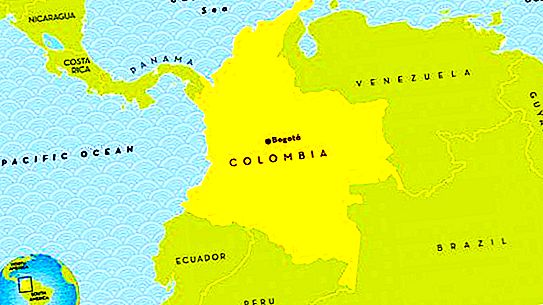The ocean floor is as diverse as the earth's surface. Its relief also has mountains, huge depressions, plains and cracks. Forty years ago, hydrothermal springs were also discovered there, later called “black smokers”. See photo and description of this wonder next.
Opening Alvin
It is not known how many more years the world would have known about the "black smokers", if not for the expedition of Robert Ballard. In 1977, with his team of two people, he went to study the depths of the sea with the Alvin apparatus. This most famous manned bathyscaphe is able to descend to a depth of 4.5 kilometers.
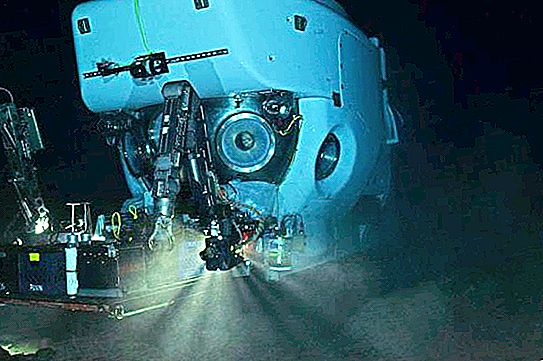
This time he didn’t have to go so far. Hydromal springs were discovered already at a depth of 2 kilometers, clinging to the bottom near the Galapagos Islands. They look like huge growths, from which fountains of black water beat. At a depth of several hundred meters from the bottom, because of the clubs that are produced by "smokers" almost nothing is visible. But below the full picture of this oceanic miracle opens.
Now more than 500 hydrothermal springs are known. They are located in the area of ridges at the junctions of earth platforms. For forty years, hundreds of scientific expeditions have visited them. Tourists also have the opportunity to see them personally, however, it costs about several tens of thousands of dollars.
How do they work?
Black Smokers are hot springs like ground geysers. Under the influence of the force of Archimedes, they throw into the ocean water saturated with minerals and heated to 400 degrees. Pressure in hundreds of atmospheres prevents water from boiling. In fact, it is in an intermediate state between gas and liquid, in physics it is called supercritical.
"Black smokers" are located mainly on the mid-ocean ridges. Active tectonic processes occur in these areas, under the influence of which a new crust is formed. When the lithospheric plates move apart, the magma beneath them comes out, growing ridges to the bottom.
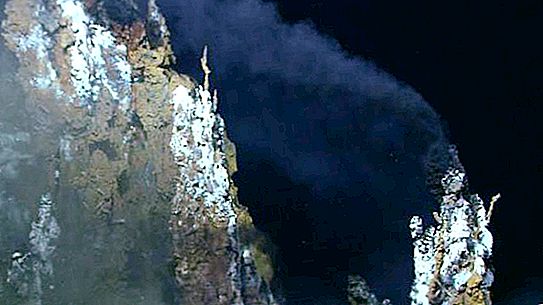
Education "smokers" is also associated with these processes. Through numerous cracks in the middle ranges, cold seawater seeps out. Below it is heated by volcanic heat and mixed with magma. Over time, it makes its way up and is thrown out through an opening in the cortex.
Their water is black due to the fact that it contains oxides of copper, zinc, iron, manganese and nickel. The hole from which the mixture exits gradually overgrows with the walls of the cooled metals. Branched outgrowths of bizarre shapes can reach 20, 30, and even 60 meters. After some time, they fall to the bottom, and the source continues to grow other flasks.
"White smokers"
The "black smokers" at the bottom of the oceans are not one of a kind. In addition to them, there are white hydrothermal springs. They act on a similar principle, only the temperatures in them are much weaker. They are removed from the edges of the slab and the direct source of heat, located on older rocks than basalts - peridotites.
White hydrotherms are completely different in composition. Unlike their black "relatives", they do not contain ores at all. The liquid that comes out of them is saturated with carbonates, sulfates, barium, calcium, silicone. Its temperature does not exceed 80 degrees. Unlike the “black smokers”, it is seawater that predominates in them, and not magmatic.
Sources of life
For a long time, it was believed that living organisms could not exist at a depth of two or more kilometers. Water temperatures here are extremely low, there is no access to light, there are no algae that can process carbon dioxide into oxygen. The discovery of “black smokers” in the ocean proved that we still do not know much about our planet.
Around hydrothermal springs, life is literally boiling. Various animals live in relatively small areas, on the boundary layers between incredibly hot fountains and the waters of a large ocean with temperatures up to +4 degrees.
Sources are the initial link in the food chain. They saturate water with hydrogen sulfide, which bacteria feed on, and they, in turn, become food for other organisms. Each new scientific expedition here opens up new biological species. For example, blind shrimps with translucent skin and a special organ were found, signaling that the animal got very close to the hot spring.

